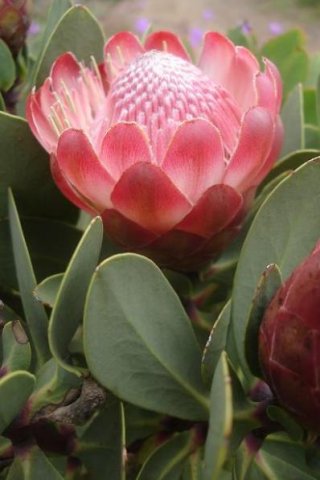Protea dracomontana

Author: Ivan Lätti
Photographer: Judd Kirkel Welwitch
Protea dracomontana, the Drakensberg dwarf sugarbush, is a shrub rarely reaching 1,5 m in height and spreads to 1 m in diameter. The branched stems are reddish, growing from a large, underground rootstock. The plant, a resprouter, was only recognised as a distinct species during the 1960s.
The cup-shaped flowerheads are short, spreading widely. The involucral bracts are round-tipped and hairless with fringed margins. Flowerhead colour is creamy white to pink or carmine red.
The distribution along the eastern escarpment of the Drakensberg is in the southwest of KwaZulu-Natal, the eastern extreme of the Free State and parts of Lesotho.
The habitat is sub-alpine Themeda or rooigras, summer rainfall grassland at elevations from 1600 m to 2200 m, mostly on fine-grained, basaltic rock. The plant may appear in dense stands on its home ground. The habitat population is deemed of least concern early in the twenty first century.
P. dracomontana is dependent upon sporadic fires for well-being in its habitat, like fynbos plants. Should no burning occur for too long, flowering diminishes or stops. The plants become static, lose leaves and assume "a moribund appearance".
P. caffra, a widespread species of also lower Drakensberg slopes, tends to hybridise with P. dracomontana (Manning, 2009; Pooley, 1998; Rourke, 1980; iNaturalist; http://redlist.sanbi.org).

